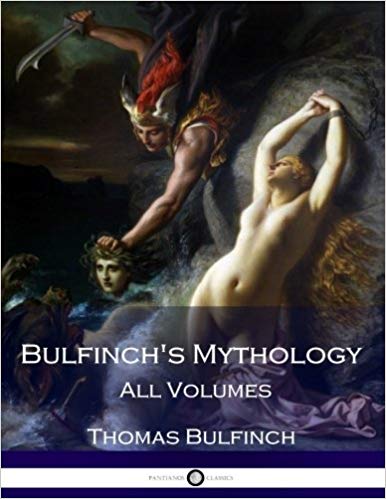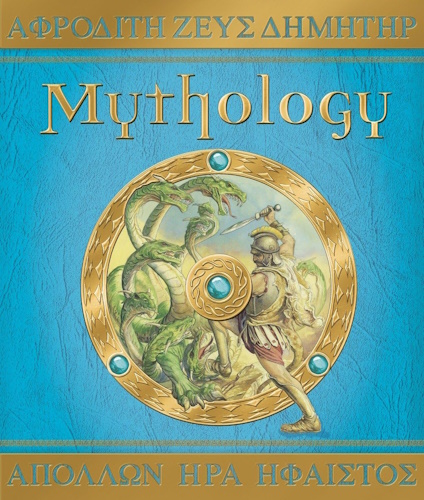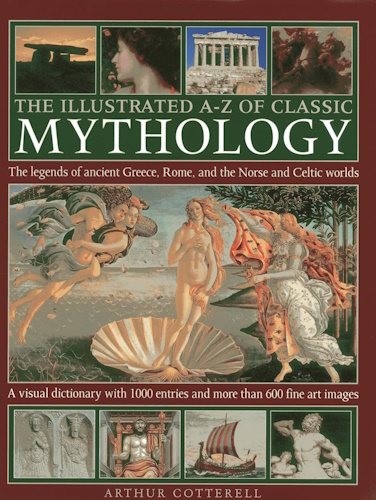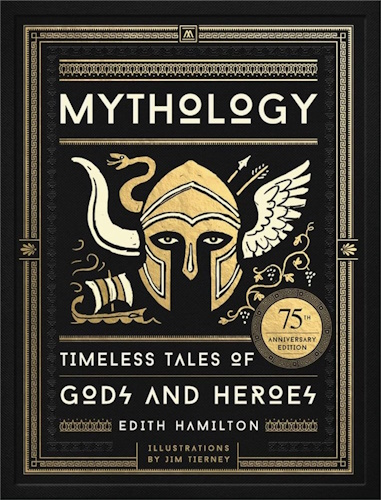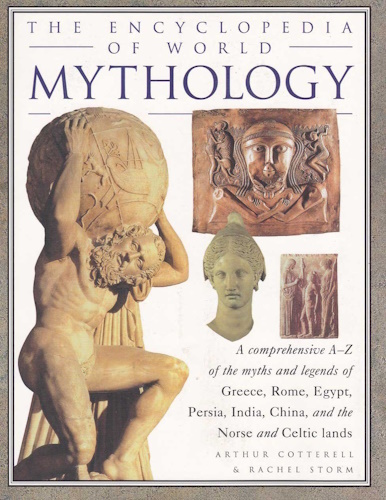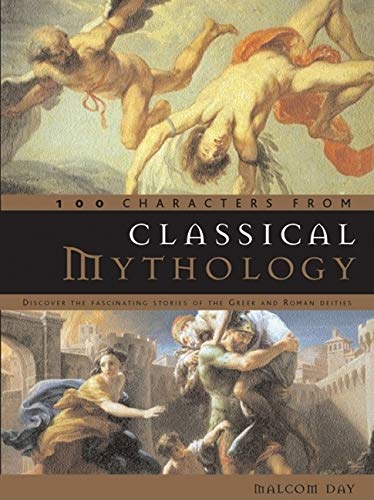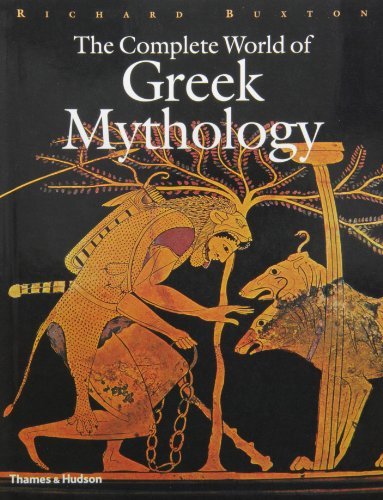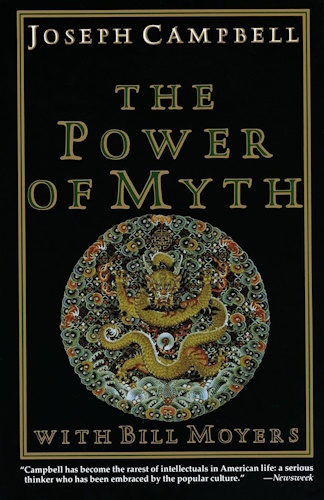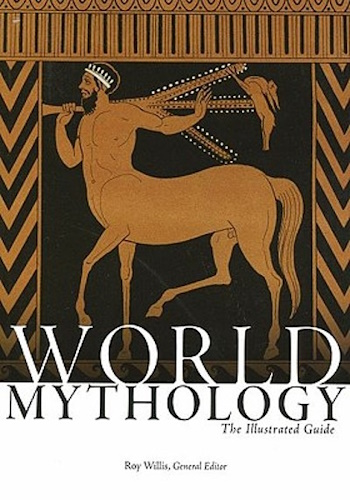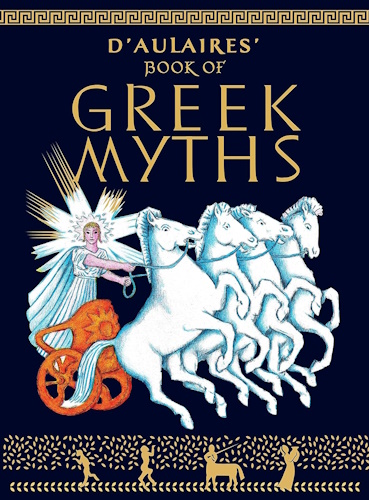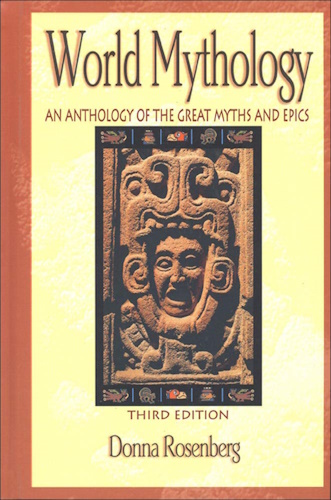
![]()
![]()
CHAPTER XII.
CADMUS- THE MYRMIDONS.
JUPITER, under the disguise of a bull, had carried away Europa, the daughter of Agenor, king of Phoenicia. Agenor commanded his son Cadmus to go in search of his sister, and not to return without her. Cadmus went and sought long and far for his sister, but could not find her, and not daring to return unsuccessful, consulted the oracle of Apollo to know what country he should settle in. The oracle informed him that he should find a cow in the field, and should follow her wherever she might wander, and where she stopped, should build a city and call it Thebes. Cadmus had hardly left the Castalian cave, from which the oracle was delivered, when he saw a young cow slowly walking before him. He followed her close, offering at the same time his prayers to Phoebus. The cow went on till she passed the shallow channel of Cephisus and came out into the plain of Panope. There she stood still, raising her broad forehead to the sky filled the air with her lowings. Cadmus gave thanks, and stooping down kissed the foreign soil, then lifting his eyes, greeted the surrounding mountains. Wishing to offer a sacrifice to Jupiter, he sent his servants to seek pure water for a libation. Near by there stood an ancient grove which had never been profaned by the axe, in the midst of which there was a cave, thick covered with the growth of bushes, its roof forming a low arch, from beneath which burst forth a fountain of purest water. In the cave lurked a horrid serpent with a crested head and scales glittering like gold. His eyes shone like fire, his body was swollen with venom, he vibrated a triple tongue, and showed a triple row of teeth. No sooner had the Tyrians dipped their pitchers in the fountain, and the in-gushing waters made a sound, than the glittering serpent raised his head out of the cave and uttered a fearful hiss. The vessels fell from their hands, the blood left their cheeks, they trembled in every limb. The serpent, twisting his scaly body in a huge coil, raised his head so as to overtop the tallest trees, and while the Tyrians from terror could neither fight nor fly, slew some with his fangs, others in his folds, and others with his poisonous breath.
Cadmus, having waited for the return of his men till midday, went in search of them. His covering was a lion's hide, and besides his Javelin he carried in his hand a lance, and in his breast a bold heart, a surer reliance than either. When he entered the wood and saw the lifeless bodies of his men, and the monster with his bloody jaws, he exclaimed, "O faithful friends, I will avenge you, or share your death." So saying he lifted a huge stone and threw it with all his force at the serpent. Such a block would have shaken the wall of a fortress, but it made no impression on the monster. Cadmus next threw his javelin, which met with better success, for it penetrated the serpent's scales, and pierced through to his entrails. Fierce with pain, the monster turned back his head to view the wound, and attempted to draw out the weapon with his mouth, but broke it off, leaving the iron point rankling in his flesh. His neck swelled with rage, bloody foam covered his jaws, and the breath of his nostrils poisoned the air around. Now he twisted himself into a circle, then stretched himself out on the ground like the trunk of a fallen tree. As he moved onward, Cadmus retreated before him, holding his spear opposite to the monster's opened jaws. The serpent snapped at the weapon and attempted to bite its iron point. At last Cadmus, watching his chance, thrust the spear at a moment when the animal's head thrown back came against the trunk of a tree, and so succeeded in pinning him to its side. His weight bent the tree as he struggled in the agonies of death.
While Cadmus stood over his conquered foe, contemplating its vast size, a voice was heard (from whence he knew not, but he heard it distinctly) commanding him to take the dragon's teeth and sow them in the earth. He obeyed. He made a furrow in the ground, and planted the teeth, destined to produce a crop of men. Scarce had he done so when the clods began to move, and the points of spears to appear above the surface. Next helmets with their nodding plumes came up, and next the shoulders and breasts and limbs of men with weapons, and in time a harvest of armed warriors. Cadmus, alarmed, prepared to encounter a new enemy, but one of them said to him, "Meddle not with our civil war." With that he who had spoken smote one of his earth-born brothers with a sword, and he himself fell pierced with an arrow from another. The latter fell victim to a fourth, and in like manner the whole crowd dealt with each other till all fell, slain with mutual wounds, except five survivors. One of these cast away his weapons and said, "Brothers, let us live in peace!" These five joined with Cadmus in building his city, to which they gave the name of Thebes.
Cadmus obtained in marriage Harmonia, the daughter of Venus. The gods left Olympus to honour the occasion with their presence, and Vulcan presented the bride with a necklace of surpassing brilliancy, his own workmanship. But a fatality hung over the family of Cadmus in consequence of his killing the serpent sacred to Mars. Semele and Ino, his daughters, and Actaeon and Pentheus, his grandchildren, all perished unhappily, and Cadmus and Harmonia quitted Thebes, now grown odious to them, and emigrated to the country of the Enchelians, who received them with honour and made Cadmus their king. But the misfortunes of their children still weighed upon their minds; and one day Cadmus exclaimed, "If a serpent's life is so dear to the gods, I would I were myself a serpent." No sooner had he uttered the words than he began to change his form. Harmonia beheld it and prayed to the gods to let her share his fate. Both became serpents. They live in the woods, but mindful of their origin, they neither avoid the presence of man nor do they ever injure any one.
There is a tradition that Cadmus introduced into Greece the letters of the alphabet which were invented by the Phoenicians. This is alluded to by Byron, where, addressing the modern Greeks, he says:
"You have the letters Cadmus gave,Think you he meant them for a slave?"
Milton, describing the serpent which tempted Eve, is reminded of the serpents of the classical stories and says:
..."-pleasing was his shape,And lovely: never since the serpent kind
Lovelier; not those that in Illyria changed
Hermione and Cadmus, nor the god
In Epidaurus."
For an explanation of the last allusion, see EPIDAURUS.
THE MYRMIDONS.
The Myrmidons were the solders of Achilles, in the Trojan war. From them all zealous and unscrupulous followers of a political chief are called by that name, down to this day. But the origin of the Myrmidons would not give one the idea of a fierce and bloody race, but rather of a laborious and peaceful one.
Cephalus, king of Athens, arrived in the island of AEgina to seek assistance of his old friend and ally AEacus, the king, in his war with Minos, king of Crete. Cephalus was most kindly received, and the desired assistance readily promised. "I have people enough," said AEacus, "to protect myself and spare you such a force as you need." "I rejoice to see it," replied Cephalus, "and my wonder has been raised, I confess, to find such a host of youths as I see around me, all apparently of about the same age. Yet there are many individuals whom I previously knew, that I look for now in vain. What has become of them?" AEacus groaned, and replied with a voice of sadness, "I have been intending to tell you, and will now do so, without more delay, that you may see how from the saddest beginning a happy result sometimes flows. Those whom you formerly knew are now dust and ashes! A plague sent by angry Juno devastated the land. She hated it because it bore the name of one of her husband's female favourites. While the disease appeared to spring from natural causes we resisted it as we best might, by natural remedies; but it soon appeared that the pestilence was too powerful for our efforts, and we yielded. At the beginning the sky seemed to settle down upon the earth, and thick clouds shut in the heated air. For four months together a deadly south wind prevailed. The disorder affected the wells and springs; thousands of snakes crept over the land and shed their poison in the fountains. The force of the disease was first spent on the lower animals- dogs, cattle, sheep, and birds. The luckless ploughman wondered to see his oxen fall in the midst of their work, and lie helpless in the unfinished furrow. The wool fell from the bleating sheep, and their bodies pined away. The horse, once foremost in the race, contested the palm no more, but groaned at his stall and died an inglorious death. The wild boar forgot his rage, the stag his swiftness, the bears no longer attacked the herds. Everything languished; dead bodies lay in the roads, the fields, and the woods; the air was poisoned by them. I tell you what is hardly credible, but neither dogs nor birds would touch them, nor starving wolves. Their decay spread the infection. Next the disease attacked the country people, and then the dwellers in the city. At first the cheek was flushed, and the breath drawn with difficulty. The tongue grew rough and swelled, and the dry mouth stood open with its veins enlarged and gasped for the air. Men could not bear the heat of their clothes or their beds, but preferred to lie on the bare ground; and the ground did not cool them, but, on the contrary, they heated the spot where they lay. Nor could the physicians help, for the disease attacked them also, and the contact of the sick gave them infection, so that the most faithful were the first victims. At last all hope of relief vanished, and men learned to look upon death as the only deliverer from disease. Then they gave way to every inclination, and cared not to ask what was expedient, for nothing was expedient. All restraint laid aside, they crowded around the wells and fountains and drank till they died, without quenching thirst. Many had not strength to get away from the water, but died in the midst of the stream, and others would drink of it notwithstanding. Such was their weariness of their sick beds that some would creep forth, and if not strong enough to stand, would die on the ground. They seemed to hate their friends, and got away from their homes, as if, not knowing the cause of their sickness, they charged it on the place of their abode. Some were seen tottering along the road, as long as they could stand, while others sank on the earth, and turned their dying eyes around to take a last look, then closed them in death.
"What heart had I left me, during all this, or what ought I to have had, except to hate life and wish to be with my dead subjects? On all sides lay my people strewn like over-ripened apples beneath the tree, or acorns under the storm-shaken oak. You see yonder a temple on the height. It is sacred to Jupiter. O how many offered prayers there, husbands for wives, fathers for sons, and died in the very act of supplication! How often, while the priest made ready for sacrifice, the victim fell, struck down by disease without waiting for the blow. At length all reverence for sacred things was lost. Bodies were thrown: out unburied, wood was wanting for funeral piles, men fought with one another for the possession of them. Finally there were none left to mourn; sons and husbands, old men and youths, Perished alike unlamented.
"Standing before the altar I raised my eyes to heaven. 'O Jupiter,' I said, 'if thou art indeed my father, and art not ashamed of thy offspring, give me back my people, or take me also away!' At these words a clap of thunder was heard. 'I accept the omen,' I cried; 'O may it be a sign of a favourable disposition towards me!' By chance there grew by the place where I stood an oak with wide-spreading branches, sacred to Jupiter. I observed a troop of ants busy with their labour, carrying minute grains in their mouths and following one another in a line up the trunk of the tree. Observing their numbers with admiration, I said, 'Give me, O father, citizens as numerous as these, and replenish my empty city.' The tree shook and gave a rustling sound with its branches, though no wind agitated them. I trembled in every limb, yet I kissed the earth and the tree. I would not confess to myself that I hoped, yet I did hope. Night came on and sleep took possession of my frame oppressed with cares. The tree stood before me in my dreams, with its numerous branches all covered with living, moving creatures. It seemed to shake its limbs and throw down over the ground a multitude of those industrious grain-gathering animals, which appeared to gain in size, and grow larger and larger, and by and by to stand erect, lay aside their superfluous legs and their black colour, and finally to assume the human form. Then I awoke, and my first impulse was to chide the gods who had robbed me of a sweet vision and given me no reality in its place. Being still in the temple, my attention was caught by the sound of many voices without; a sound of late unusual to my ears. While I began to think I was yet dreaming, Telamon, my son, throwing open the temple gates, exclaimed: 'Father, approach, and behold things surpassing even your hopes!' I went forth; I saw a multitude of men such as I had seen in my dream, and they were passing in procession in the same manner. While I gazed with wonder and delight they approached, and kneeling hailed me as their king. I paid my vows to Jove, and proceeded to allot the vacant city to the new-born race, and to parcel out the fields among them. I called them Myrmidons, from the ant (myrmex) from which they sprang. You have seen these persons; their dispositions resemble those which they had in their former shape. They are a diligent and industrious race, eager to gain, and tenacious of their gains. Among them you may recruit your forces. They will follow you to the war, young in years and bold in heart."
This description of the plague is coped by Ovid from the account which Thucydides, the Greek historian, gives of the plague of Athens. The historian drew from life, and all the poets and writers of fiction since his day, when they have had occasion to describe a similar scene, have borrowed their details from him.
-
Urantia Book, 44:0.11 - The Celestial Artisans
Never in your long ascendancy will you lose the power to recognize your associates of former existences. Always, as you ascend inward in the scale of life, will you retain the ability to recognize and fraternize with the fellow beings of your previous and lower levels of experience. Each new translation or resurrection will add one more group of spirit beings to your vision range without in the least depriving you of the ability to recognize your friends and fellows of former estates.
-
Princess Bride 1987 Wallace Shawn (Vizzini) and Mandy Patinkin (Inigo Montoya)
Vizzini: HE DIDN'T FALL? INCONCEIVABLE.
Inigo Montoya: You keep using that word. I do not think it means what you think it means. -
Urantia Book, 117:4.14 - The Finite God
And here is mystery: The more closely man approaches God through love, the greater the reality -- actuality -- of that man. The more man withdraws from God, the more nearly he approaches nonreality -- cessation of existence. When man consecrates his will to the doing of the Father's will, when man gives God all that he has, then does God make that man more than he is.
-
Urantia Book, 167:7.4 - The Talk About Angels
"And do you not remember that I said to you once before that, if you had your spiritual eyes anointed, you would then see the heavens opened and behold the angels of God ascending and descending? It is by the ministry of the angels that one world may be kept in touch with other worlds, for have I not repeatedly told you that I have other sheep not of this fold?"
-
Urantia Book, Foreword - 0:12.12 - The Trinities
But we know that there dwells within the human mind a fragment of God, and that there sojourns with the human soul the Spirit of Truth; and we further know that these spirit forces conspire to enable material man to grasp the reality of spiritual values and to comprehend the philosophy of universe meanings. But even more certainly we know that these spirits of the Divine Presence are able to assist man in the spiritual appropriation of all truth contributory to the enhancement of the ever-progressing reality of personal religious experience—God-consciousness.
-
Urantia Book, 1:4.3 - The Mystery Of God
When you are through down here, when your course has been run in temporary form on earth, when your trial trip in the flesh is finished, when the dust that composes the mortal tabernacle "returns to the earth whence it came"; then, it is revealed, the indwelling "Spirit shall return to God who gave it." There sojourns within each moral being of this planet a fragment of God, a part and parcel of divinity. It is not yet yours by right of possession, but it is designedly intended to be one with you if you survive the mortal existence.
-
Urantia Book, 1:4.1 - The Mystery Of God
And the greatest of all the unfathomable mysteries of God is the phenomenon of the divine indwelling of mortal minds. The manner in which the Universal Father sojourns with the creatures of time is the most profound of all universe mysteries; the divine presence in the mind of man is the mystery of mysteries.
-
Urantia Book, 1:4.6 - The Mystery Of God
To every spirit being and to every mortal creature in every sphere and on every world of the universe of universes, the Universal Father reveals all of his gracious and divine self that can be discerned or comprehended by such spirit beings and by such mortal creatures. God is no respecter of persons, either spiritual or material. The divine presence which any child of the universe enjoys at any given moment is limited only by the capacity of such a creature to receive and to discern the spirit actualities of the supermaterial world.
-
Urantia Book, 11:0.1 - The Eternal Isle Of Paradise
Paradise is the eternal center of the universe of universes and the abiding place of the Universal Father, the Eternal Son, the Infinite Spirit, and their divine co-ordinates and associates. This central Isle is the most gigantic organized body of cosmic reality in all the master universe. Paradise is a material sphere as well as a spiritual abode. All of the intelligent creation of the Universal Father is domiciled on material abodes; hence must the absolute controlling center also be material, literal. And again it should be reiterated that spirit things and spiritual beings are real.
-
Urantia Book, 50:6.4 - Planetary Culture
Culture presupposes quality of mind; culture cannot be enhanced unless mind is elevated. Superior intellect will seek a noble culture and find some way to attain such a goal. Inferior minds will spurn the highest culture even when presented to them ready-made.
-
Urantia Book, 54:1.6 - True And False Liberty
True liberty is the associate of genuine self-respect; false liberty is the consort of self-admiration. True liberty is the fruit of self-control; false liberty, the assumption of self-assertion. Self-control leads to altruistic service; self-admiration tends towards the exploitation of others for the selfish aggrandizement of such a mistaken individual as is willing to sacrifice righteous attainment for the sake of possessing unjust power over his fellow beings.
-
Urantia Book, 54:1.9 - True And False Liberty
How dare the self-willed creature encroach upon the rights of his fellows in the name of personal liberty when the Supreme Rulers of the universe stand back in merciful respect for these prerogatives of will and potentials of personality! No being, in the exercise of his supposed personal liberty, has a right to deprive any other being of those privileges of existence conferred by the Creators and duly respected by all their loyal associates, subordinates, and subjects.
-
Urantia Book, 54:1.8 - True And False Liberty
There is no error greater than that species of self-deception which leads intelligent beings to crave the exercise of power over other beings for the purpose of depriving these persons of their natural liberties. The golden rule of human fairness cries out against all such fraud, unfairness, selfishness, and unrighteousness.
